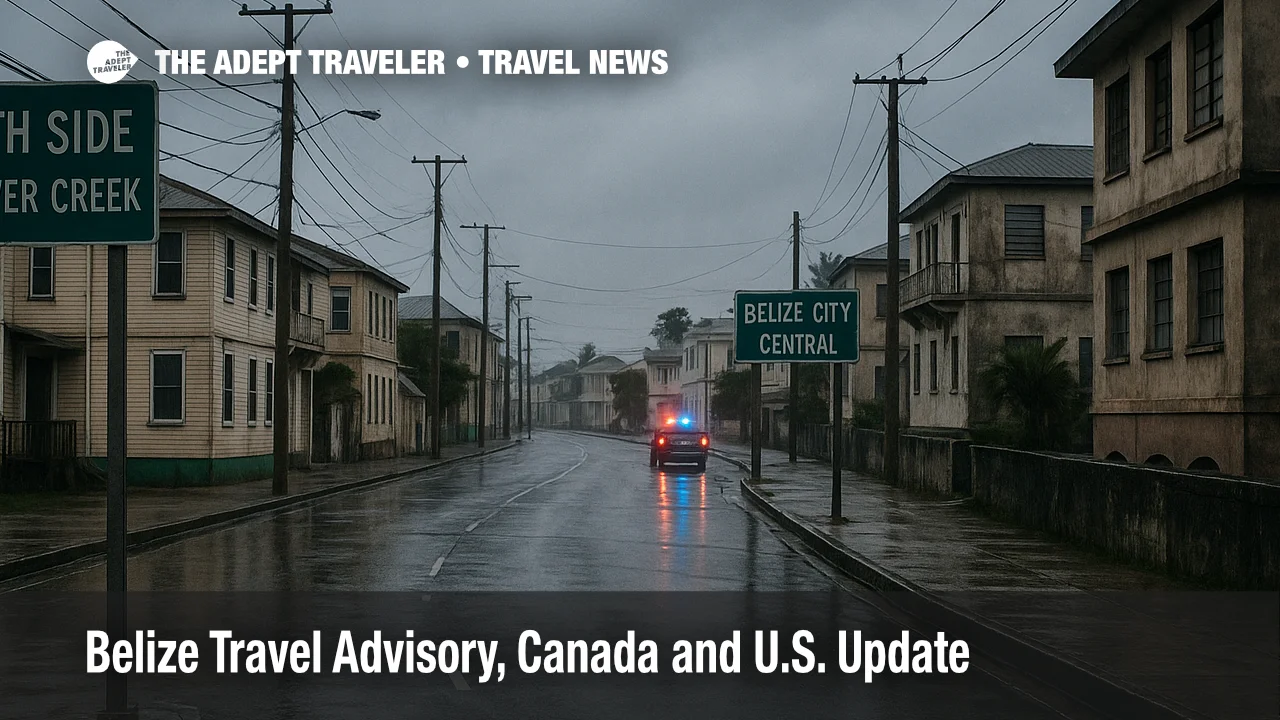Belize City Advisory, Stick To North Side Routes

Key points
- Canada advises avoiding non-essential travel to Southside Belize City south of Haulover Creek
- U.S. places Belize City at Level 3 while the country is Level 2 due to crime
- Use vetted, prebooked transport for airport, hotel, and domestic transfer links
- Stay in established tourism zones and avoid Southside after dark
- Monitor advisories and confirm insurance coverage for crime-related incidents
Impact
- Airport Transfers
- Prearrange licensed or hotel-vetted transport between Philip S. W. Goldson International Airport and lodging or domestic connections
- Routing Inside Belize City
- Favor North Side routes and avoid Southside, especially after dark
- Lodging Choices
- Book in established tourism zones outside the Southside area
- Personal Security
- Keep valuables out of sight and stay alert on roads and rivers where opportunistic theft occurs
- Trip Prep
- Review U.S. and Canadian advisories regularly and verify insurance for crime and evacuation benefits
Canada continues to advise travelers to exercise a high degree of caution across Belize, and to avoid non-essential travel to Southside Belize City, the area south of Haulover Creek, due to gang and drug-related violence including murders and shootings. The United States classifies Belize overall at Level 2, exercise increased caution, while applying a higher Level 3, reconsider travel, to Belize City, citing concentrated, gang-related violence on the south side. Together, these advisories call for tighter transfer planning and conservative routing for anyone connecting through Belize City.
Advisory snapshot, what changed and why it matters
Canada's page is explicit about Southside Belize City, south of the Haulover Creek River, where it recommends avoiding non-essential travel because of gang and drug-related violence. The U.S. advisory keeps the nationwide Level 2 but elevates Belize City to Level 3, again highlighting the south side as the primary locus of violent crime and noting constraints on police response. For travelers, the practical takeaway is to minimize exposure to Southside routes and to use vetted transport when moving between the international airport, hotels, and domestic connections.
Latest developments
While the advisory levels themselves are stable as of November 12, 2025, both governments update safety language and location-specific cautions as conditions warrant. The U.S. country information page reiterates that violent crime can occur during the day, even in tourist areas, and emphasizes that a significant portion is gang-related, which supports the city-specific Level 3 designation. Travelers should check the advisory pages before departure and again before any intra-Belize repositioning through the capital or Belize City.
Analysis
For most itineraries, risk is concentrated in routing choices rather than in Belize's marquee tourism zones. If your plans include transits between Philip S. W. Goldson International Airport and Belize City or domestic links, prebook a licensed taxi through your hotel or a reputable operator, or use a transfer arranged by a tour company. This reduces exposure to opportunistic theft and helps you avoid inadvertent detours across Southside. If you must cross town, plan daytime movements, keep windows up, keep valuables out of sight, and avoid walking after dark in unfamiliar areas.
Background, how the advisory system works. Canada's "exercise a high degree of caution" aligns with elevated but manageable risk at the national level, with a sharper "avoid non-essential travel" call for Southside Belize City that is geographically bounded by Haulover Creek. The U.S. four-tier system allows a city-specific Level 3 overlay on a Level 2 country, which is why Belize City is separated from the rest of the country in the U.S. guidance. In practice, this means itinerary design and transfer logistics make the largest difference in your risk profile.
Final thoughts
The core message is consistent. Keep Belize City transits tight, stick to North Side routes, and lean on vetted transport. Monitor both Canada and the United States for updates, and confirm that your travel insurance addresses crime-related losses and emergency evacuation. With prudent routing and timing, most travelers can limit exposure to the areas driving the advisories.
